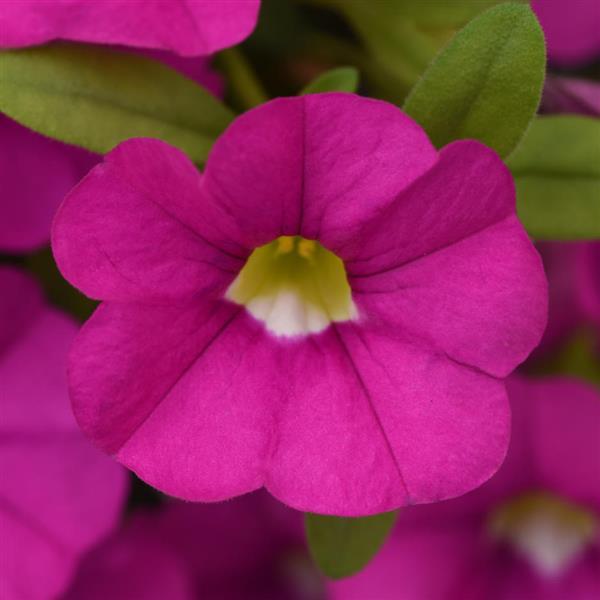Description
Calibrachoa ‘Cabaret Pink’ — A Cheerful Trailing Wonder for Every Gardener
Welcome to the Pink Parade
We all love a plant that works hard yet looks effortless. Calibrachoa ‘Cabaret Pink’ checks both boxes. With blooms that resemble tiny petunias painted in vivid bubble-gum pink, this trailing beauty lights up baskets, window boxes, and garden beds from spring’s gentle start all the way through crisp fall days. In other words, it gives us color when we crave it most, and it does so without demanding fussy care.
In this deep-dive guide we will explore everything you need to know. First, let’s get acquainted with the plant itself. After that, we will walk through practical, easy-to-follow care steps. By the end, you and I will feel ready to invite ‘Cabaret Pink’ into any sunny space, small or grand.
Meet ‘Cabaret Pink’
A Snapshot in Simple Terms
- Family: Solanaceae (nightshade), like tomatoes and true petunias.
- Series: Cabaret, bred for uniform shape and nonstop color.
- Habit: Mounded at the crown, spilling into soft cascades up to 18 inches.
- Flower Size: About one inch across, each throat brushed with warm yellow.
- Bloom Time: Late spring until frost, with the heaviest show in early summer.
- Hardiness: Perennial in USDA Zones 9–11; grown as an annual elsewhere.
Instead of a single flush of blossoms, ‘Cabaret Pink’ pushes out new flowers daily. The plant keeps itself tidy, so we can spend our garden time relaxing rather than deadheading. That self-cleaning trait also reduces the chance of mold on old petals.
Why We Love ‘Cabaret Pink’
Unbeatable Color
The hue lands between rosy pink and bubble gum, bright enough to pop against greens yet soft enough to pair with deeper reds or purples. After more than one season of trials, growers rave about its color staying strong even in July heat.
Perfect Form for Containers
The mounded center anchors hanging baskets, while trailing stems tip over the rim in a graceful skirt. You and I can plant just one rooted cutting in an 8-inch pot and still enjoy a full, lush look by early summer.
Pollinator Party
Tiny blossoms beckon bees, hoverflies, and the occasional butterfly. In other words, you add a living buffet that helps your whole garden thrive.
Easygoing Nature
Salt spray, light wind, and quick temperature swings? ‘Cabaret Pink’ handles them with poise. As long as the soil drains well, it rarely sulks.
Design Ideas to Try
| Setting | How ‘Cabaret Pink’ Shines |
|---|---|
| Front porch basket | Cascades of pink greet visitors with a friendly wave. |
| Mixed patio planter | Pair with lemon-drop calibrachoa or white verbena for a strawberries-and-cream vibe. |
| Raised veggie bed edge | Flowers attract pollinators while stems spill over, saving root space for lettuce. |
| Rock garden nook | Plant between stones where roots stay cool yet drainage is sharp. |
| Window box | Combine with silver foliage like licorice plant for a modern pastel palette. |
Feel free to experiment. Because the plant stays compact at the crown, it does not smother companions. Instead, it weaves through like ribbon on a gift.
How to Care for ‘Cabaret Pink’
Growing this plant is a simple routine. Let’s break it down into bite-sized steps.
1. Light: Give It the Sun It Loves
Calibrachoa needs six or more hours of direct sun. Morning light plus dappled afternoon shade works in hot regions, but full sun gives the heaviest bloom. If you notice lanky stems and fewer flowers, move the pot to a brighter spot.
2. Soil: Think Light and Airy
We need a mix that drains quickly yet holds steady moisture—similar to a quality potting mix for tomatoes. A pH of 5.5–6.2 keeps nutrients available. You can blend two parts peat or coco coir with one part perlite and one part compost for a homemade option. Instead of dense garden soil, stick with containers or raised beds for best results.
3. Water: Steady, Not Soggy
Roots prefer even moisture. Water when the top half-inch feels dry. In midsummer heat, that may mean daily watering for hanging baskets. Place your finger into the soil; if it feels cool and damp, wait a bit. Rather than counting days, let the plant and weather guide you.
Tip: Use self-watering baskets or drip spikes to lessen daily chores, especially on vacation weeks.
4. Feeding: Small Meals, Big Rewards
Because ‘Cabaret Pink’ pumps out blooms nonstop, it needs a steady nutrient supply. Choose a balanced, water-soluble fertilizer (such as 15-15-15 or 20-10-20) at quarter strength every third watering. After more than a month of blooming, add a dose of iron chelate if leaves pale; calibrachoa can be iron-hungry in alkaline water.
5. Pruning and Pinching
Early in the season, pinch back the tips once. This simple move encourages branching and doubles future flower power. Later, if stems stretch longer than you like, trim by one-third. Within two weeks, fresh shoots will cover the snipped points with new buds.
6. Temperature and Humidity
- Ideal day‐night range: 55 °F to 85 °F (13 °C to 29 °C).
- Heat tolerance: Good; color holds up to 95 °F if evenly watered.
- Cold tolerance: Light frost (below 32 °F) ends the show, so plan accordingly.
Humidity between 40 % and 60 % keeps foliage content. Good air flow prevents mildew, so avoid crowding baskets too close together.
7. Overwintering Tips
In zones 9–11, trim plants back to six inches after the fall bloom flush. A layer of mulch shields surface roots from cool nights. In colder zones, you can overwinter a favorite specimen indoors:
- Before first frost, cut back by half and pot in fresh mix.
- Place under bright grow lights or a south window.
- Water lightly every ten days, just enough to keep stems from shriveling.
- By late March, increase light and fertilizer to wake it up for spring.
This method lets us keep a cherished plant or rare color in rotation year after year.
8. Common Problems and Easy Fixes
| Symptom | Likely Cause | Simple Solution |
|---|---|---|
| Yellow leaves with green veins | Iron deficiency | Apply chelated iron drench; lower soil pH. |
| Sparse blooms | Too little sun or fertilizer | Move to brighter spot; resume light feeding. |
| Sticky leaves, tiny insects | Aphids | Spray with water jet; follow with insecticidal soap. |
| Brown, mushy stems near soil | Root rot from overwatering | Improve drainage and let soil dry before watering again. |
Remember, most issues fade fast once we adjust one care factor.
Propagation: Share the Pink Joy
Calibrachoa seeds seldom run true, so we rely on cuttings. Here’s a straightforward method:
- Snip 3-inch stem tips free of flowers.
- Remove lower leaves, dip in rooting gel, and stick into moist, sterile mix.
- Cover with a vented plastic dome.
- Keep under bright light at 70 °F.
- Roots form in 10–14 days.
After more than three weeks, you will see new growth—that’s your sign to pot them up.
Eco-Friendly Pointers
- Use organic fertilizers to reduce runoff.
- Collect hanging-basket runoff for nearby shrubs.
- Pair with native perennials that support local pollinators beyond the annual season.
Small steps like these help protect soil and water while letting us enjoy vivid color.
Quick Reference Cheat Sheet
| Need | Best Practice |
|---|---|
| Sunlight | 6 + hours full sun |
| Soil | Well-drained, pH 5.5–6.2 |
| Water | When top ½-inch is dry |
| Fertilizer | Quarter-strength balanced feed every third watering |
| Pinch | Once early season |
| Prune | Trim by ⅓ if leggy |
| Bloom Window | Late spring to frost |
Pin this cheat sheet near your potting bench. It keeps care simple and stress-free.
Let’s Grow Bold Pink Together
Calibrachoa ‘Cabaret Pink’ brings easy cheer and plenty of pollinators to any sunny nook. With our shared care know-how—bright light, airy soil, steady moisture, and gentle feeding—we can count on oceans of pink trumpets from April right through October. Whether you’re filling a single window box or designing an entire patio display, this plant rewards every effort with color that refuses to fade.
Now it’s your turn. Pick up a transplant, tuck it into fresh mix, and watch how swiftly it transforms the space we share with nature. Happy planting, and here’s to gardens that sing in shades of joyful pink!




